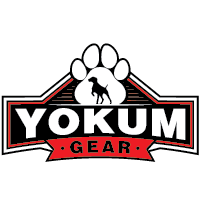Welcoming a new puppy into your home is an exciting experience filled with joy and curiosity. One of the essential accessories you'll need for your new furry friend is a harness. A well-chosen harness ensures comfort, safety, and ease of use for both you and your puppy. However, with so many options available, selecting the perfect harness can be overwhelming. Here’s a detailed guide to help you make an informed choice.
Why Choose a Harness Over a Collar?
While collars are a popular choice for dogs, harnesses offer several advantages, especially for puppies. Harnesses distribute pressure evenly across the puppy's chest and shoulders, reducing the risk of neck injuries. They also provide more control, which is crucial when training a young dog. Furthermore, harnesses are less likely to slip off, ensuring your puppy remains securely by your side.
Types of Harnesses
Before choosing a harness, it’s important to understand the different types available. Here are some common types of harnesses:
1. Back-Clip Harness
This type of harness has a D-ring on the back where you attach the leash. It is suitable for well-behaved puppies who don’t pull much on their leash. It’s easy to put on and comfortable for everyday wear.
2. Front-Clip Harness
A front-clip harness has the leash attachment point on the chest. This configuration provides more control as it gently redirects the puppy towards you when they pull. It’s a great choice for puppies that are still learning to walk on a leash.
3. Dual-Clip Harness
Dual-clip harnesses offer both front and back leash attachments. This versatility allows you to use the back clip for casual walks and switch to the front clip for training sessions.
4. Step-In Harness
As the name suggests, a step-in harness allows your puppy to step into the harness, which is then secured with straps over the back. This type of harness is convenient and straightforward to use.
Factors to Consider When Choosing a Harness
With multiple harness types available, it’s important to consider several factors to ensure you choose the best harness for your puppy:
1. Size and Adjustability
Ensure the harness fits your puppy snugly but not too tight. Puppies grow quickly, so choose a harness that is adjustable and can accommodate their growth. Measure your puppy’s girth (the widest part of their ribcage) and refer to the manufacturer’s sizing chart to select the correct size.
2. Material and Durability
A good harness is made from durable, high-quality materials that can withstand wear and tear. Look for harnesses made from materials like nylon, polyester, or leather. Additionally, ensure the hardware (buckles and D-rings) is sturdy and rust-resistant.
3. Comfort
Comfort is crucial for your puppy’s well-being. Opt for a harness with padded chest and belly straps to prevent chafing and discomfort. Soft, breathable materials are also important to keep your puppy cool and comfortable, especially during extended wear.
4. Ease of Use
Select a harness that is easy to put on and take off. Complicated harnesses can frustrate both you and your puppy. Step-in or buckle harnesses are typically user-friendly and quick to secure.
5. Control and Safety
Your harness should provide ample control, especially for energetic and excitable puppies. Front-clip and dual-clip harnesses are excellent options for training purposes. Reflective straps or patches are added safety features, making your puppy visible during early morning or late evening walks.
Tips for Introducing a Harness to Your Puppy
Introducing a harness to your puppy requires patience and positive reinforcement:
1. Start Slow
Let your puppy sniff and investigate the harness before putting it on. Gradually introduce the harness by allowing your puppy to wear it for short periods indoors, rewarding them with treats and praise.
2. Associate with Positive Experiences
Make wearing the harness a positive experience by associating it with fun activities, like playtime or short walks. This will help your puppy develop a positive attitude towards the harness.
3. Monitor for Discomfort
Observe your puppy for signs of discomfort or chafing. Adjust the harness as needed to ensure a proper fit. If your puppy seems particularly resistant, consult with a veterinarian or professional dog trainer for advice.
Conclusion
Choosing the perfect harness for your puppy is a crucial step in ensuring their comfort and safety. By considering factors such as size, material, comfort, and ease of use, you can find a harness that fits your puppy’s needs and lifestyle. Remember to introduce the harness gradually and associate it with positive experiences to make the process smooth and enjoyable for your furry friend. With the right harness, you and your puppy can look forward to many happy and safe adventures together.

